Aquatic Invertebrates
Media

Species Types
Scientific Name
Corydalus cornutus
Description
Hellgrammites are the aquatic larval form of eastern dobsonflies. They are fiercely predaceous and look a little like centipedes. Anglers often use them as bait.
Media
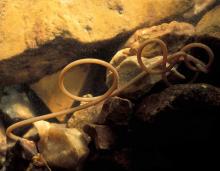
Species Types
Scientific Name
About 350 species scientifically described.
Description
Adult horsehair worms can be nearly 3 feet long and live in water. They are practically featureless, smooth, aquatic worms that writhe into knots and curls.
Media
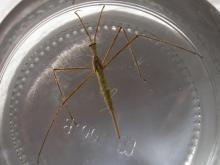
Species Types
Scientific Name
Ranatra spp. and Nepa apiculata
Description
Water scorpions remain still, looking like a random bit of plant material. Then they suddenly grab their prey and deliver disabling fluids with a quick jab of their knifelike beak.
Media

Species Types
Scientific Name
Dugesia, Planaria, and other genera
Description
Unlike their parasitic cousins in the flatworm group, turbellarians, or planarians, are tiny carnivores or detritus-eaters that glide smoothly across submerged leaves and other objects.
Media
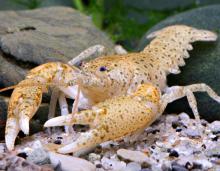
Species Types
Scientific Name
Cambarus maculatus
Description
The freckled crayfish is powerfully built, yellowish tan, with numerous conspicuous black spots on its pincers, carapace, and abdomen. It is largely restricted to the Courtois Hills section of the Meramec River basin.
Media
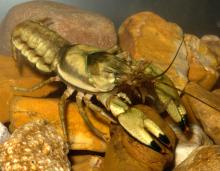
Species Types
Scientific Name
Faxonius neglectus (formerly Orconectes neglectus)
Description
The ringed crayfish is olive green to reddish tan and usually has black or brown rings around the pincer tips. In Missouri it is found in clear, rocky Ozark streams in the southwestern quarter.
Media
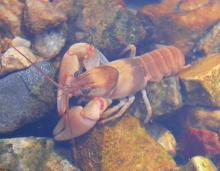
Species Types
Scientific Name
Faxonius luteus (formerly Orconectes luteus)
Description
The golden crayfish varies in color from olive green to golden yellow. Many body parts are trimmed with red. A dark band crosses the head just in front of the cervical groove, and another crosses the carapace at its junction with the abdomen. It's a wide-ranging species.
Media
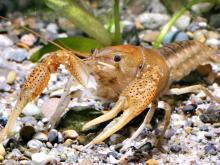
Species Types
Scientific Name
Procambarus acutus
Description
Adult White River crawfish are usually a deep burgundy red with a black V-shaped stripe on the abdomen. Juveniles are gray with dark spots scattered over the carapace. In Missouri, this species mostly occurs in the Bootheel and north along the Mississippi River.
Media

Species Types
Scientific Name
Faxonius punctimanus (formerly Orconectes punctimanus)
Description
The spothanded crayfish is moderately large and usually has a noticeable black spot on each pincer near the base of the movable finger. In Missouri, it is found mostly in Ozark waterways in the southeastern quarter of the state, from Callaway, Montgomery, and Warren counties south.
Media
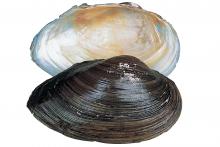
Species Types
Scientific Name
Pygandon grandis
Description
When a floater dies, this large mussel with a thick shell will actually rise to the water surface and float as it decays.
See Also
About Aquatic Invertebrates in Missouri
Missouri's streams, lakes, and other aquatic habitats hold thousands of kinds of invertebrates — worms, freshwater mussels, snails, crayfish, insects, and other animals without backbones. These creatures are vital links in the aquatic food chain, and their presence and numbers tell us a lot about water quality.





















